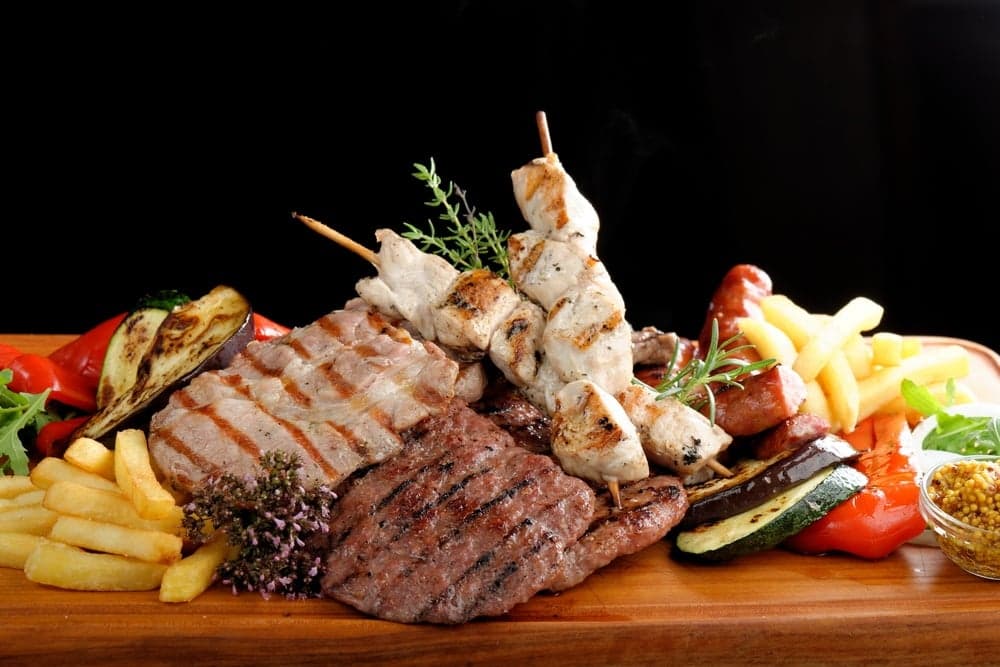Expecting mothers need 18 mg of iron a day. It’s best to get the vitamins, minerals and nutrients that both you and your baby need for healthy development from a well-balanced diet. So which iron-rich foods are best for pregnancy? Dried cereals fortified with iron is one of the best sources and some fortified cereals may meet this requirement. It’s nice to know that dark chocolate is a great source of iron too.
Which Iron-rich foods are best for pregnancy?
Meat & Eggs
- Beef
- Liver (not recommended)
- Oysters (cooked)
- Clams
- Shrimp
- Chicken
- Turkey
- Ham
- Veal
- Lamb
- Pork
- Eggs
Vegetables
- Spinach, cooked
- Collards
- Chard
- Kale
- Tomatoes, canned, stewed
- Green Peas
- Broccoli
- Sweet potatoes
- Green beans
- Dandelion greens
- Beet greens
Fruit
- Strawberries
- Raisins
- Watermelon
- Prunes
- Figs
- Dried peaches
- Dried apricots
Beans/Legumes/Nuts
- Beans (white beans, kidney beans, and chickpeas/garbanzo beans)
- Lentils
- Dried peas
- Cashews
- Pistachios
- Pumpkin/squash seeds
Breads / Cereals / Starches
- Whole wheat bread
- Baked potato
- Oat cereal
- Bran cereal
- Cornmeal
- Enriched pasta
- Enriched rice
Other foods
- Dark Chocolate (best for last)
Iron Absorption
Not all sources of iron are equal in the amount of iron available to be absorbed by the body. There are two types of iron—heme iron and non-heme iron. Heme iron is found in meat, poultry, and fish, while non-heme iron is found in both plant foods (vegetables, beans, fortified grains) and meat.
Heme iron, however, is much more readily absorbed by the body. The body can absorb up to 30 percent of heme iron, while it can only absorb 2-10% of non-heme iron.
While meat may improve your iron levels more readily, it is important to eat a variety of sources of iron, including plant sources.
For this reason, when eating foods containing non-heme iron, it is best to pair them with foods containing vitamin C, which can aid iron absorption.
Some foods rich in vitamin C include guava, bell peppers, kiwis, oranges, grapefruit, strawberries, Brussels sprouts, cantaloupe, and papaya.
Also, eating heme sources of iron (meat) at the same meal as non-heme sources of iron (plants) can increase the absorption of non-heme iron.
More Helpful Articles:
- How to Treat Iron Deficiency Naturally During Pregnancy
- Anemia During Pregnancy
- Nutrients and Vitamins for Pregnancy
Compiled using information from the following sources:
1. Centers for Disease Control and Prevention. (2011). Iron and iron deficiency.
2. The American National Red Cross. (n.d.). Iron-rich foods.
https://www.redcrossblood.org/learn-about-blood/health-and-wellness/iron-rich-foods
3. The Office of Dietary Supplements. (2015). Iron.
https://ods.od.nih.gov/factsheets/Iron-HealthProfessional/
4. U.S. Department of Health and Human Services, National Institutes of Health, & National Heart, Lung, and Blood Institute. (2011). Your guide to anemia.
5. Centers for Disease Control and Prevention. (2011). Iron and iron deficiency.
6. The American National Red Cross. (n.d.). Iron-rich foods.
https://www.redcrossblood.org/learn-about-blood/health-and-wellness/iron-rich-foods
7. The Office of Dietary Supplements. (2015). Iron.









